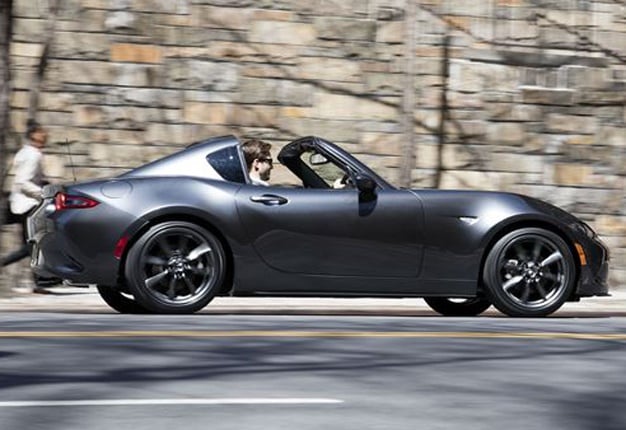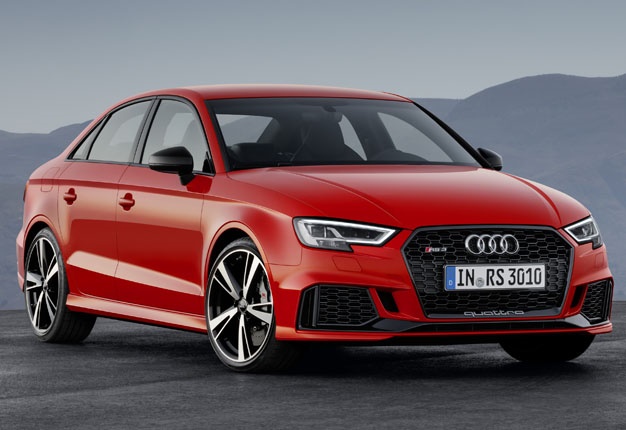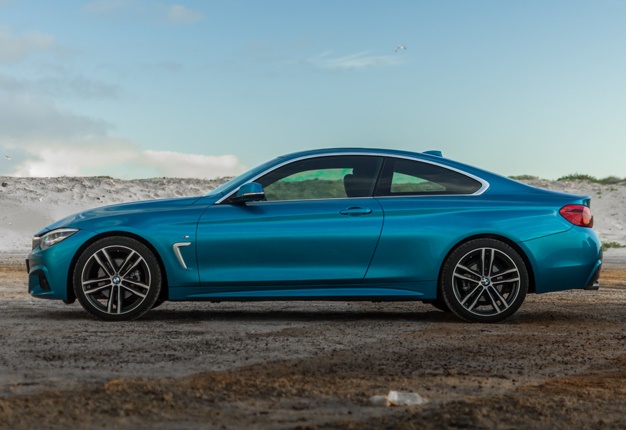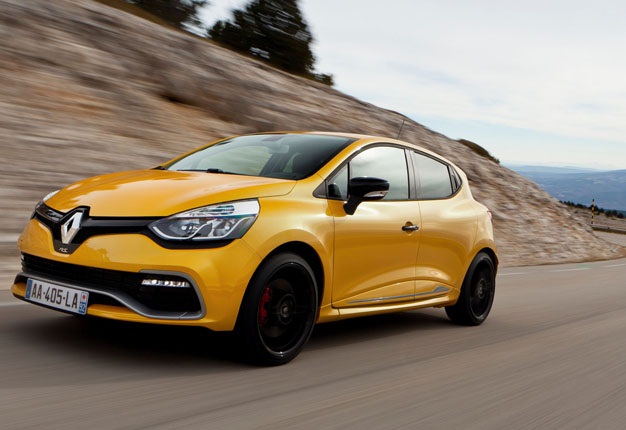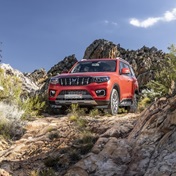Cape Town - Before the new year properly sets in, Egmont Sippel analyses seven 2017 cars that disappointed in one way or the another. The Sad Seven they’re certainly not.
But from reasons small to big – including something as minor as badging – you can’t call them The Magnificent Seven, either.
Herewith the first instalment:
1) Mazda MX-5 RF (R533 000)
When last have you driven a rear wheel drive car weighing in at a mere ton?
The Mazda MX-5, uniquely, is such a car and it’s a roadster – although the new RF variant presents an in-between solution without being a true cabriolet-coupé.
The hard-topped roof, see, is retractable but the beefy buttresses that they rest on, are never buried in the car’s body; they’re lifted momentarily whilst the top is dropped, to create space for the roof’s fold-away ballet, but then those buttresses settle in their original positions again.
RF, thus, is short for Retractable Fastback.
All of this adds 50kg above the car’s shoulder line, but not to worry: the RF’s softer bushes and bump stops (compared to the Roadster’s) ensure smooth modulation of body roll to let the car settle quite beautifully on the outside rear tyre – even though bigger bumps can unsettle things, a limited slip diff notwithstanding.
Peaks of 118 kW/200Nm from a normally aspirated 2.0-litre also ensure perky performance, whilst quick steering, an upright driving position and high-bridged front fenders deliver the necessary tools for good sightlines plus accurate car placement.
And the ride on low-profile tyres is firm, but well managed by double front wishbones and multilink rear suspension.
So, where’s the catch?
The gearbox. The RF loses out in the 0-100 km/h sprint compared to the manual Roadster’s by 1.3 seconds, mainly because the 6-speed auto is truly old-school stuff.
And guess what? Locally, the RF isn’t marketed with a manual.
The RF’s gain then, is proper all-weather hard top protection; the pain is a little bit of extra weight and a totally outdated auto box.
2) Audi RS3 quattro sedan (R925 000)
If you want firepower from a hatch based sedan, you can’t do better than Audi’s RS3.
Sure, you can buy the five-door RS3 Sportback for R30 000 less than the four-door RS3 Sedan’s R925 000 and still get (rear wheel biased) quattro drive fed by 294kW and 480Nm from a reworked 2.5-litre 5-cylinder turbo, and still ride on 255 and 235mm Pirelli P Zero’s front and rear (and you’ve read that correctly; the fronts are wider, exactly to eliminate turn-in understeer – which it does successfully).
You might also argue that the better part of a million is too much for a car of this size, no matter how powerful.
But you won’t be arguing the point vociferously if R900 000 catapults you from 0-100 km/h in less than four seconds.
Think about it. It’s quicker than the BMW M3/M4, let alone the BMW M2. In fact, it’s quicker than the BMW M3/M4 Competition.
The riposte might be that the RS3 is all-wheel driven, the M3/M4 not.
But that’s all part of the deal, isn’t it? The RS3’s short sprint is quicker, in any case, than the Jaguar F-Type R’s, also an all-wheel drive machine. Ditto for the Merc-AMG CLA45 4Matic, the Merc-AMG C63 S, the Merc-AMG CLS63 S, the Merc-AMG SL65...
We can go on and on, the point being that the RS3 is plenty quick, right?
Nope. It is explosively quick, ballistically quick.
Technically, Audi has pushed the envelope with stuff like an aluminium crankcase, a hollow crankshaft and the like. And on an aesthetic and functional level you get a boot, a great cabin, unbelievable trim and impeccable fit and finish.
You also get styling from the days when Ingolstadt still delivered. Visually, the RS3 sedan is one of the best balanced designs on the road, whilst aurally, the Audi lives on the edge of that spine-tingling sphere inhabited by the Jaguar F-Type, the five-cylinder’s firing sequence delivering a special kind of thunder via two big-bore exhausts, either side of an eye-catching diffuser.
All of this for less than a million, before options.
Yet, the car fails miserably in terms of software programming. Pootle around, let’s say at a 100 km/h in fifth or sixth, and try and hook one or two lower gears merely by prodding the accelerator.
Gently, gently now. But nope. It won’t happen.
Still you try, though, a little bit harder each time.
And then suddenly, out of the blue, software calibration will dish up second gear, no matter whether you’ve been in fourth, fifth, sixth or seventh – and no matter the driving mode.
Boom! All the way down the box, in one single go, to the extent that the car’s momentum is sometimes arrested for a split second before the inevitable surge kicks in like a Judo master going berserk, accompanied by violent acoustics.
Oi! Not nice, because it all conspires to make the RS3 a rather nasty and unpleasant instrument to pick gaps with in slow traffic, unless you’re absolutely dedicated to the use of column mounted gear shift paddles.
Yet, in reasonably relaxed conditions you want to use the accelerator for this gently-grabbing-a-lower-gear-thing, as you’d have to depress the pedal a little bit in any case, to pick up speed and take the gap.
3) BMW 420d Steptronic (R660 000)
Look, you don’t pour diesel into a wine glass. You pour wine into a wine glass.
So, why would you want to drop an oil burner into a beautiful car like the BMW 420d?
Munich has recently brought minor updates to the 3- and 4-series – tweaks to the dampers, brakes and steering for less body roll, more neutral on-road behaviour and better stability and retardation improve the cars, but the next necessity would be to lighten the steering at parking speeds and come up with a modernised dash.
The rest is brilliant, though, except that the common rail 2.0-litre four cylinder turbodiesel delivers too little (140kW, 400Nm) to challenge the grip of an inherently good chassis shod by 225/40R 19’s at the front, 255/35R 19’s at the rear.
The engine also starts to take strain at 200 km/h-plus, which ain’t all that fast for a BMW coupé.
Yet, the big thing is this: you don’t buy a race horse if you need a donkey’s performance. And you don’t fill a wine glass with diesel.
4) Renault Clio RS Trophy (R420 000)
The original fourth-generation Clio RS was revealed at the Paris Motor Show in 2012.
Guyancourt recently reworked the Clio IV RS and, especially in terms of electronics, the car has a lot going for it: steering wheel paddles, three driving modes (Normal, Sport and Race), launch control, a datalogger (able to record, in real time, all the settings displayed during your day and link them to the corresponding GPS positions) and a g-force diagram (recording, amongst others, maximum values for longitudinal and lateral acceleration, plus speeds and gear selection at the appropriate moments, with screenshots that could be saved to a USB stick).
Etcetera, etcetera.
The RS is still powered by a Nissan-based 1.6-litre turbo, and you get a choice between two levels: 147 kW for the Lux 200 variant, and 162 kW for the Trophy 220.
The slightly more comfortable Lux sits on 17”-wheels and a sports chassis (with new front axle architecture and some oversized components for increased rigidity); whilst the sportier Trophy rides on 18”-wheels and a chassis that’s been lowered by 20 mm at the front, and 10 mm at the rear.
The good news is that the electronically controlled EDC box (Efficient Double Clutch) has been much improved. Over the last 15 years, Renault has also made a lot of progress with electrically assisted power steering, the latter governed a strongly geared system on the RS.
Minimal input on the wheel thus translates quickly and substantially to directional changes. Combine this with a so-called electronic diff (which micro-brakes the inside front wheel during cornering), and commencement of turn-in in the death throes of a hard braking phase will tuck the nose in sharply, at the very same moment the rear goes light, which makes for a nervous car on corner entry.
This, at least, was the experience during flat-out driving on the local launch of the more powerful Trophy in May 2017. Whether it was a set-up (toe-in, camber and the like) or perhaps a tyre pressure issue therefore had to be assessed during our week with the car, at a later date.
However, massive vibrational shaking and screeching at the limit of retardation put paid to that effort.
Another disappointing RS feature is that the initial aural grunt of the Akrapovic sports exhausts is dissipated into a flat blowy whoosh as revs close in on the red line, an acoustic trait shared by hot Meganes.
On the available evidence, we would therefore have to conclude that the RS Trophy is, electronically, a very advanced package, but one that needs better interplay between steering, brakes, electronic diff and chassis, to create the required balance and composure needed to drive such a powerful, stiffly sprung, short-wheelbased car flat-out on a bendy road, especially if things gets bumpy.




 Publications
Publications
 Partners
Partners




